Clean Power
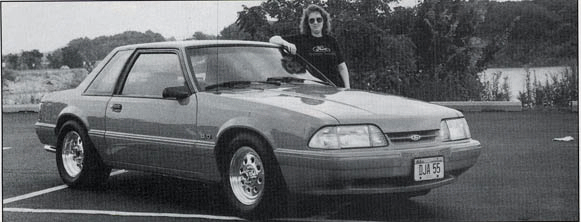
Clean Power!
The objective: Putting a Mustang in the 12s in the quarter-mile, with a package that would not only increase horsepower, but also maintain EPA standards.
BY B.J. THAYER
Rick Anderson's wile. Diane has the quickest and cleanest 5-liter Mustang around, thanks to a power package that includes 65mm throttle body, 77mm Pro-M meter, K&N filter. BBK shorty headers, Walker Dynomax mufflers and 3.73 gears. Twelve-second notchback is 100% smog-legal to boot!
Have you ever wonderedhow fast you could makean emissions-legalMustang go through thestock catalytic converters? Rick Anderson of Anderson Ford Motorsport in Illinois did, so he started a project that would give him an answer to this question. His goal was to get a car in the 12s that would pass 49-state emissions (with all the emphasis lately on emissions and protecting the environment).
Rick started with an '88 Mustang LX coupe with 43,000 miles (his wife drives the car 30 miles to work each way daily) that already had an Anderson Ford Motorsport Quick Kit III installed. The kit consists of a 3.73 ring and pinion, race under drive pulleys. K&N air filter, ram air kit, 65mm throttle body. BBK equal length shorty headers, WalkerDynomax mufflers and a 160 high- flow thermostat, all of which passes 49-state emissions. With this under his belt, he was well on his way to getting a "clean powered" Mustang in the 12s in the quarter-mile. However, he wanted to put a package together that would not only increase horsepower, but would also maintain EPA standards.
By converting the car from speed density to mass air, Rick was able to get a cleaner and more controlled Suet/air mixture. The stock intake, heads and cam were removed and all gasket surfaces cleaned. After carefully weighing all his options, he decided that the Motorsport GT-40 heads and GT-40 intake would give him the most performance for his money.
Rather than using the 1.94 and 1.60 valves, he stayed with the 1.84 and 1.54 valves to enable him to mill the heads without notching the pistons. The heads were ported and flowed by Ron Anderson Performance for a .500 lift cam and then milled. These heads flow big numbers from .100 to .500 lift, while still retaining awesome air speed. This is where his main source of horsepower comes from, along with the help of Crane's new 2040 cam, which is 50-state certified.
The GT-40 intake was untouched. Motorsport 1.6 bolt-down roller rockers were installed as well as a 77mm Pro-M mass air with 24-lb. injectors and a Motorsport fuel pump. Crane's new fuel regulator and Interceptor were used to allow him to monitor and change the fuel and timing curves, if necessary. (An advantage to this fuel pressure regulator is that it allows you to lower the fuel pressure below stock, if needed.)
With the internal modifications completed, it was time to start thinking about how he could take some weight off. On a car that only weighs 3060 lbs. about the only place to take any weight off is either the hood or the wheels. To enhance the appearance more noticeably, Rick chose the latter. Weld Draglites with the new backspacing replaced the stock wheels-15x31/2 with 21/2-inch backspacing on the front and 15x8 with 51/2-inch backspacing on the rear, with 91/2-inch Hoosiers set 3/4 inch inside the fenderwells for a sleek look.
After spending several weeks getting everything just right, Rick managed to put together a kit that exceeded his expectations. To get a rough idea of what the car would run, he hooked it up to the Vericom and took it out for a quick drive. It pulled from 2500 to 6000 in all gears and ran 13.20 at 108 mph.
|
INTERCEPTOR: TAKING CONTROL OF YOUR MUSTANG'S COMPUTER
|

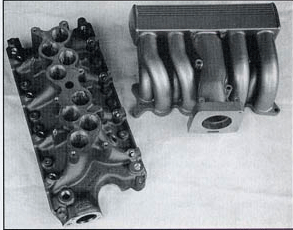
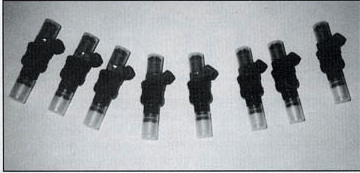
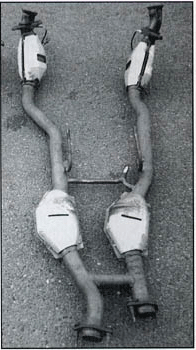
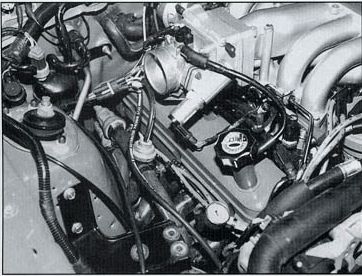
From top to bottom: The heart of Anderson Ford Motorsport's Clean Power package is a pair of 61-40 heads prepped by Ron Anderson Performance and Crane's 2040 hydraulic roller camshaft. A two-piece GT-40 induction system was also used, the lower port-matched by RAP. With the smog pump connected and 24-pound injectors installed, the notch ran 12.75 at 107 mph through the stock catalytic converters!
He was finally ready to take it to a real track, but first he needed to have it tested to see if it would pass emissions. The HC count was 5 ppm (maximum in the state of Illinois is 220) and the CO was 0% (cannot be over 120%). It passed with flying colors, and had more than enough room to spare!
Who says you can't have your cake and eat it too. How does 12.70s at 107 mph, along with 20+ mpg sound to you for a daily driven 5.0
Mustang?!
At the track, Rick went 13.20 at 106.61 mph on the Hoosiers, through the stock catalytic converters with the air pump bypassed on his second pass.
For his next trip down the track, he used a pair of M/T 26x8.5 slicks and it went 12.85 at 106.8 mph. Before he went home tenths day, he ended up running a best time of 12.75 at 107.1 mph still through the stock conceders! He had accomplished his goal and the best pan was that his fuel mileage was unaffected by the changes. On the way to be track and during the testing he got 18 mpg; on the way home, he got 23.5 mpg.
Rick feels there is even more horsepower to be gained by utilizing the Interceptor, which he didn't have a chance to test yet. He's hoping to be able to cut down his ET another tenth or two.
SOURCE
Anderson Ford Motorsport
Route 10 west
Citron, IL 61727
217/935-2384

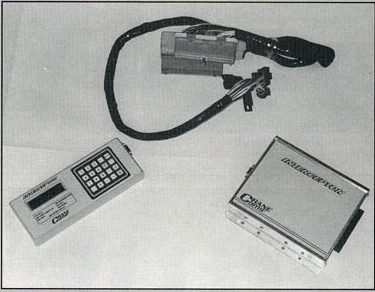 "It can do the world." says an effusive Rick Anderson of the Crane Interceptor, a programmable engine control computer system, which mounts between the 5.0 Mustang's main wiring harness and the EEC-IV engine control module.
"It can do the world." says an effusive Rick Anderson of the Crane Interceptor, a programmable engine control computer system, which mounts between the 5.0 Mustang's main wiring harness and the EEC-IV engine control module.